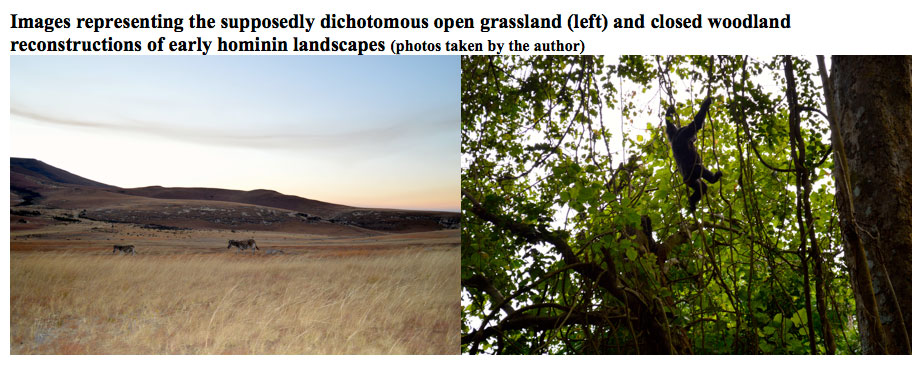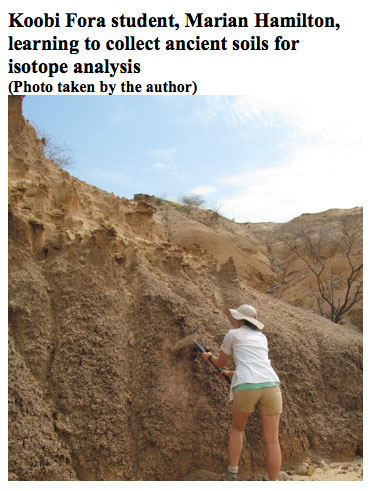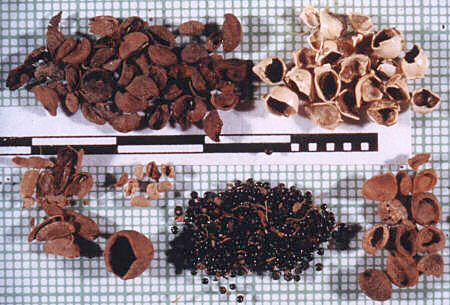“Do paleoecologists even possess an adequate vocabulary to imagine anything other than savannah mosaic, more or less, wetter or drier, bush or grassland?”
In 1981, Andrew Hill, a well-known paleoecologist (someone who studies ancient environments), asked this question in a short, somewhat-scathing perspective article in Nature entitled, “Why study paleoecology?” Five years after this article was written, I was born. Twenty-one years later I was standing in sweltering heat, amidst the desolate but beautifully extensive fossil deposits in Hadar, Ethiopia. I was unwittingly falling in love with the study of paleoecology as I collected the horns of extinct antelopes and the still-sharp teeth of their extinct, hyenid predators. Hominins were exceedingly rare but traces of other fossil animals were everywhere. Seven years after that, and 34 years after Dr. Hill asked this question, I’m a PhD student in Human Paleobiology and am finding myself asking the same thing.

It’s less pessimistic than it sounds because, as a field, the answer is, nearly, yes. Paleoecologists have answered some really interesting questions about hominin ecology. For example, Dr. Thure Cerling and his colleagues recently showed that, contrary to popular belief, 6-million year-old east African landscapes were actually more open and savanna-like than previously thought. Along with Dr. Cerling, another researcher, Dr. Matt Sponheimer and others showed that, despite living in these open landscapes, hominins were getting their food from more closed environments until about 3.5 million years ago, when they begin to gradually move into these open habitats.
This may not sound groundbreaking but it’s very exciting to those of us who want to know exactly how hominins were interacting with these landscapes, and, more particularly, how these landscapes may have driven hominins to change their behaviors in unique ways. In other words, did hominin environments help make us human?
The trouble with my field is, we often get so caught up in trying to reconstruct exactly how many trees or bushes were on a landscape that we forget to think about the significance of what we’re doing. Why should we care that hominins lived in a savanna or jungle? Who cares if their teeth say they were eating foods from a woody-bushland? What does that tell you about the animal we evolved from? I think this is what Andrew Hill meant by asking his pithy question and there are many ways to go about asking about answering it.

I now work at a site called Koobi Fora, Kenya, which is just as hot and (nearly) as beautiful as Hadar. I’ve spent months of my life meticulously collecting fossils and ancient soils from this site for my dissertation as well as compiling and analyzing this data. It’s tempting to focus on reconstructing my site. It would make my life much easier. But then I couldn’t go beyond the vocabulary that Andrew Hill posited. I’d rather try to convince anthropologists that because early hominins are large-bodied animals (only a bit smaller than me) they likely had wide distributions that require asking questions about large-scale ecological differences across space. Using data from many different researchers (including my own), this will allow me to quantify differences between different hominin environments. I want to know if there are particular environments that support greater diversity of animals and, possibly, greater numbers of hominins. These questions will move paleoecology towards more holistic, ecological questions, rather than focusing on asking descriptive questions. Based on my research, I’ve discovered that we are at a point as a field that we need to integrate each other’s data to really ask interesting questions.
Mostly, I write this particular blog because want to inspire others to address Andrew Hill’s review of paleoecology head-on and to take the strong advice from the end of the article to heart: “paleoecologists should stop sheltering behind assertions that the science is in a primitive ‘data-gathering’ stage: we need to get to grips with the relevant and interesting problems instead of assuming the more complacent and easy posture of acquiring more data just because it is possible to acquire it, of solving ‘problems’ just because they can be solved.”


